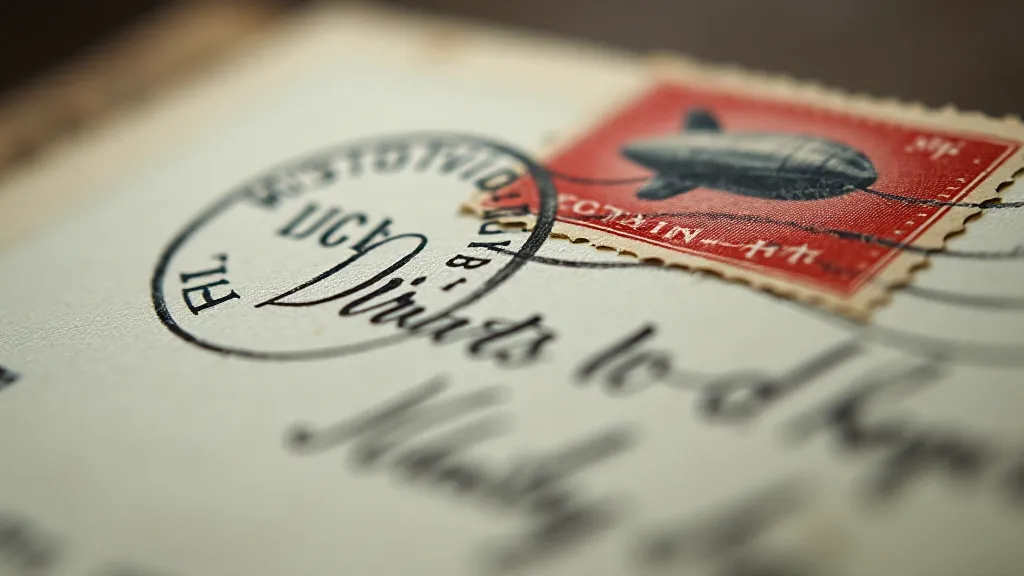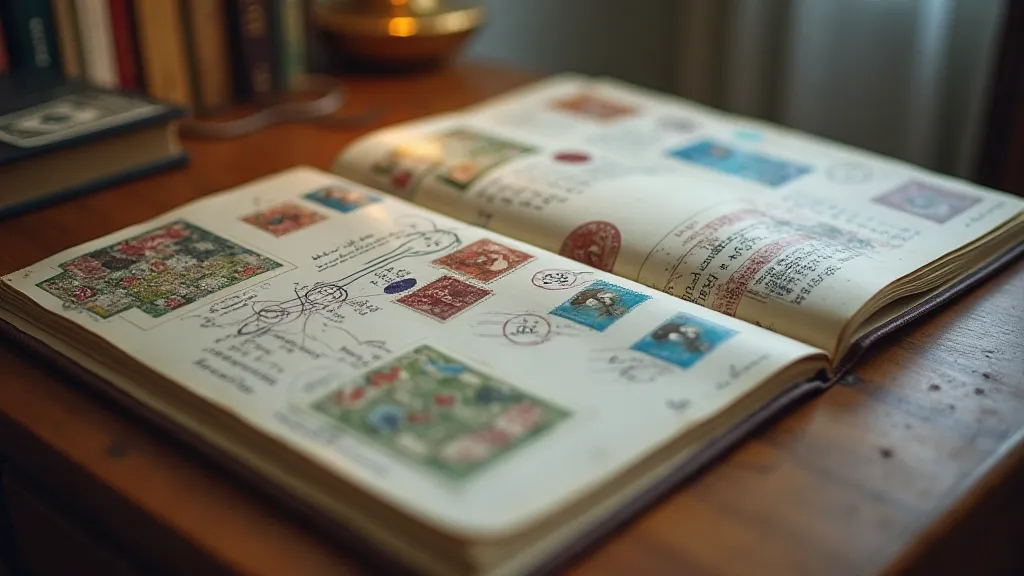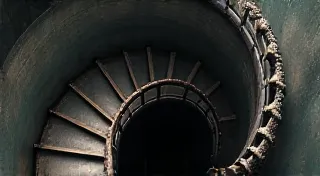The Butterfly Effect of Scarcity: How Limited Editions Shape First Day Cover Value
There’s a peculiar, almost reverent silence that settles over a room full of serious collectors. It’s not the silence of boredom, but the quiet intensity of contemplation – a shared understanding of something precious and finite. I’m thinking of my grandfather, a renowned accordionist, and the meticulous care he took with his instruments. Each bellows, each reed, painstakingly preserved. The feeling mirrored in the world of First Day Covers (FDCs) is remarkably similar: a deep appreciation for a fleeting moment in time, captured and preserved on a small piece of paper.
For those unfamiliar, a First Day Cover (FDC) is a postage stamp affixed to an envelope, postmarked on the date of its official release – the "first day" of that stamp’s availability. They're much more than just stamps on envelopes; they are tangible records of postal history, windows into the cultural narratives of their time, and, increasingly, valuable collectibles.
The Mechanics of Scarcity: More Than Just Numbers
The core principle driving the value of most collectibles, and FDCs particularly, boils down to one thing: scarcity. But scarcity isn’t simply about the number printed. It’s a complex equation involving production runs, postal procedures, errors, and even the geographical locations where those envelopes were originally mailed. Think of it as the butterfly effect – a tiny variation in the initial conditions (a slight adjustment to a printing plate, a postal clerk’s unconventional cancellation) can lead to wildly different outcomes regarding rarity and value.
Initially, the U.S. Postal Service wasn's entirely cognizant of the collecting potential of FDCs. Early print runs were often generous, aiming to cater to anticipated demand. However, as collectors started recognizing the significance of these first-day offerings, demand outstripped supply. This prompted gradual reductions in print runs. A stamp printed in the 1960s might have a print run of millions; by the 1980s, that number could have shrunk to a few hundred thousand. Today, print runs can be surprisingly low, sometimes just a few tens of thousands, or even fewer for commemorative issues with specialized cancellations. This evolution and the stories behind these historical documents are truly fascinating, and the subtle nuances contribute greatly to their enduring appeal. For those deeply interested in tracing those footsteps of history through the stories these covers tell, a closer look at Ephemeral Echoes: Tracing the Footsteps of History Through First Day Covers provides greater insight.

The Power of the Postmark: Geographic Significance and Cancellation Types
The postmark isn't merely a date and location; it's a crucial identifier of an FDC's value. The city where the envelope was postmarked on the first day holds considerable importance. Major postal distribution centers like New York, Chicago, and San Francisco were prime targets for collectors, leading to higher demand and, consequently, increased value for FDCs postmarked there.
Beyond the city, the *type* of postmark is vital. Standard, machine cancellations are common and generally less valuable. However, "cachets" – collectors' cachets that were pre-printed on the envelope before the stamp was applied – can add significant value, especially if they are aesthetically pleasing or historically relevant. Hand-struck cancellations, particularly those with unique designs or applied by postal employees known for their artistry, are also highly sought after. Rare postal employee markings, known as "jardinières," are incredibly desirable, representing the creativity and personality of those who worked within the postal system. These markings frequently reveal intimate details about the day, the location, and sometimes, even the individuals involved in their application – offering fascinating glimpses into the human stories behind the postal process. Understanding these nuances and appreciating the subtle details requires a deeper understanding of how the postal service and its employees interacted with collectors and their passion. This subject is wonderfully explored in Whispers of the Post Office: Unearthing the Human Stories Behind First Day Cover Cancellations, which delves into the often overlooked contributions of postal workers.
Errors and Imperfections: Fortuitous Accidents in the Production Process
As with any mass-produced item, errors happen. In the world of FDCs, these errors can be a collector's dream. Misprints, perforation errors (incorrectly positioned or missing perforations), and even centering issues (the stamp being off-center on the envelope) can dramatically increase the value of an FDC. While a perfectly centered, pristine FDC is always desirable, a rare error can command a premium many times higher than its standard counterpart.
My grandfather, when repairing his accordions, always said that sometimes, the most beautiful repairs revealed the instrument's history – the marks of a master craftsman, the evidence of a well-loved life. Similarly, minor imperfections on an FDC can tell a story – a glimpse into the complexities of the postal system and the human element involved in bringing those stamps into collectors' hands. Sometimes, these errors are so unique and unexpected that they become celebrated anomalies within the collecting world, attracting a dedicated following of enthusiasts eager to acquire and study these rare occurrences. The most notable of these anomalies and the stories that surround them are detailed in Unveiling the Anomaly: Investigating the Most Notable First Day Cover Errors & Oddities, highlighting the unusual circumstances and their impact on value.
Restoration and Preservation: Respecting the Past, Securing the Future
Preserving FDCs requires a delicate balance. Cleaning, for example, is generally discouraged, as it can damage the paper and compromise the cancellation. Professional conservation can be considered for particularly valuable or damaged FDCs, but it’s a costly and specialized field. Any restoration work should be performed by a qualified expert, and the fact that restoration has taken place should be disclosed.

Proper storage is key. FDCs should be stored in acid-free pockets or albums to protect them from light, humidity, and handling. This careful stewardship ensures that these historical treasures remain accessible to future generations of collectors. Building and passing on a collection involves understanding not only the monetary value but also the importance of tradition and careful management. This is a crucial aspect of ensuring that passion for collecting endures and is shared across generations, as detailed in "The Collector's Legacy".
Value Insights: A Spectrum of Rarity
Determining the value of an FDC is a nuanced process. Factors like print run, postmark location, cancellation type, condition, and any errors or imperfections all contribute to the final price. A common FDC might be worth a few dollars; a rare, error-laden example with a desirable postmark can fetch thousands. Even seemingly minor variations can make a significant difference in value.
For example, a 1930 Graf Zeppelin FDC with a New York postmark in pristine condition is significantly more valuable than one postmarked in a smaller town. Similarly, a 1969 Man on the Moon FDC with a misprint – a missing portion of the moon image – can command a premium over a standard example. Researching the specific stamp, its history, and any known variations is crucial for accurate valuation. The process of establishing value requires diligent investigation and a keen eye for detail, constantly reassessing and refining judgments based on new information and market trends.
The Collector's Legacy: Passing Down the Passion for First Day Covers to Future Generations
More than just a hobby, collecting First Day Covers is a tradition, a lineage of appreciation. It’s about sharing a passion and understanding the significance of preserving history. It's about appreciating not just the monetary value, but the stories held within each envelope – the narratives of postage, of a moment in time.
The Enduring Appeal of First Day Covers
The value of a First Day Cover is about more than just monetary worth; it’s about preserving history, appreciating artistry, and connecting with a shared passion. It’s about understanding the delicate interplay of scarcity, chance, and human endeavor that shapes the collecting landscape. Like the carefully restored bellows of my grandfather’s accordion, each FDC tells a story - a whisper from the past, a tangible link to a specific moment in time, forever captured on a small piece of paper.






